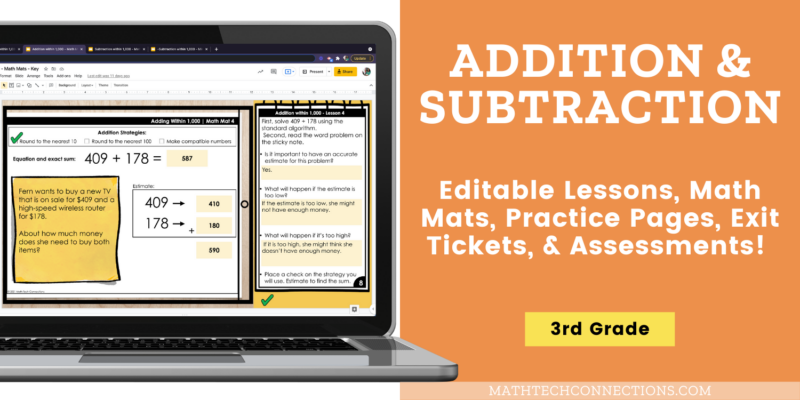
Sometimes when I read the teacher-facing pages included with most packaged curriculum, I think, “Why don’t they just provide this information to teachers?”
My goal with this 3rd Grade Addition & Subtraction Unit was to provide students with direct, specific instruction that puts them in charge of their own learning.
3rd graders will receive instruction in several (but not too many!) strategies in Unit 3, exploring addition and subtraction horizontally and vertically. Students are encouraged to be aware of the process for themselves, and decide which strategies work best with their learning style.
Place value concepts, composing, and decomposing are all heavily reinforced as they relate to addition and subtraction. Students are encouraged to think critically about computation, estimation, accuracy, and word problems so that they become “can do” mathematicians who aren’t intimidated by rigorous expectations.
3rd Grade Unit 3 Mini-Units
- Mini-Unit 1: Adding Within 1,000
- Mini-Unit 2: Subtracting Within 1,000
- Mini-Unit 3: Multi-Step Word Problems
Mini-Unit 1: Adding Within 1,000
Mini-Unit 1 starts with a lesson exploring addition strategies. I find teaching too many strategies can be counter-productive if students become overwhelmed by the choices. Lesson 1.1 focuses on making 10 or 100 to add, front-end and partial sums, and counting on. This lesson encourages accurate computation and flexible thinking about place value. Lesson 1.2 teaches the standard algorithm as a 1-step alternative to other strategies and algorithms and provides plenty of practice regrouping 10 smaller units to the next larger place.
Lesson 1.3 looks at addition equations requiring 2 regroupings using all of the previously learned strategies, critically examining which strategies streamline the process and which are more trouble than they’re worth. Lesson 1.4 teaches students to use rounding or other compatible number combinations as estimation strategies. Students are given practice examining the accuracy of estimated sums and when, in fact, the accuracy matters.
Mini-Unit 2: Subtracting Within 1,000
Mini-Unit 2 mirrors the previous mini-unit, but with a focus on subtraction. Lesson 2.1 introduces the strategies of compensation, partial differences, counting up, and counting back to subtract. Lesson 2.2 teaches the standard algorithm, including decomposing to regroup. While the standard algorithm can be more complicated to learn initially, it does provide a 1-step method to subtract, which can improve accuracy. Like Mini-Unit 1, this Mini-Unit encourages students to think about which strategies work best for their learning style.
Lesson 2.3 examines the most complex types of subtraction problems, those requiring 2 decompositions, including subtracting across zeros. Each lesson provides fully scaffolded explanations, examples, and non-examples to help students internalize the process. Each lesson also uses addition as the inverse operation for subtraction so students can check their own work. Lesson 2.4 involves finding estimates for differences, analyzing the impact of rounding to different places on the accuracy of an estimate, and different strategies for getting accurate estimates.
Mini-Unit 3: Multi-Step Word Problems with 4 Operations
Word problems can be so challenging for 3rd graders! Having to translate language-based scenarios into mathematical processes can be overwhelming for even the most capable mathematician. To top it off, there are several different kinds of word problems for each operation! Mini-Unit 3 starts with an analysis of vocabulary and language in word problems to encourage visualization of word problems as mathematical operations. Students are encouraged to get active, using manipulatives, visual models, and diagrams to demystify the process.
Lesson 3.2 focuses only on multi-step word problems using different combinations of addition and subtraction, so students get more practice analyzing vocabulary, analyzing the different kinds of word problems, and practice representing problems with visual models like tape diagrams. Lesson 3.3 gets even more rigorous with word problems utilizing all 4 operations in different combinations. Previously learned skills including place value, computation, and properties of all four operations are involved for real-world word problem scenarios.
Digital Guided Math Activities Included!
Each component of the 3rd Grade Guided Math Curriculum comes in printable and digital versions to maximize you flexibility teaching these important concepts. YOU can choose which version of each lesson component should be used – and when – for your diverse learners.
Digital lessons teach the content for each graduated step needed to learn how to add and subtract within 1,000, how to estimate sums and differences accurately, and how to solve multi-step, multi-digit word problems.



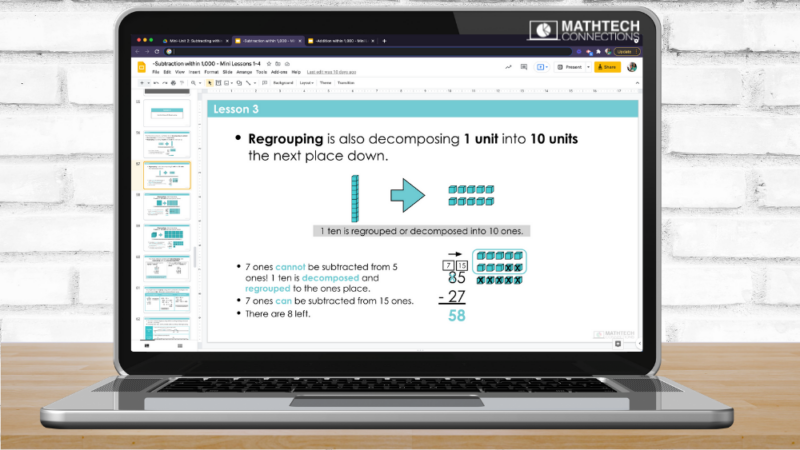
Digital Math Mats and Task Cards with movable digital pieces allow students to manipulate blocks, digits, and number lines to develop a deep understanding of each addition & subtraction skill.


Full-color Digital Practice Pages also use interactive movable digital pieces to allow students to demonstrate their learning in a more independent way. Each lesson also includes a Digital Exit Ticket to give you a snapshot of student learning. Exit tickets are such an important formative assessment for your planning process as a teacher.


Bundle & Save with the complete Unit 3 – Addition & Subtraction bundle!
Read Related Blog Posts ↓
- About the 3rd Grade Guided Math Curriculum
- 3rd Grade Unit 1: Multiplication & Division
- 3rd Grade Unit 2: Place Value
- 3rd Grade Unit 3: Addition & Subtraction
- 3rd Grade Unit 4: Fractions
- 3rd Grade Unit 5: Measurement
- 3rd Grade Unit 6: Graphing
- 3rd Grade Unit 7: Geometry
- 3rd Grade Unit 8: Money & Financial Literacy




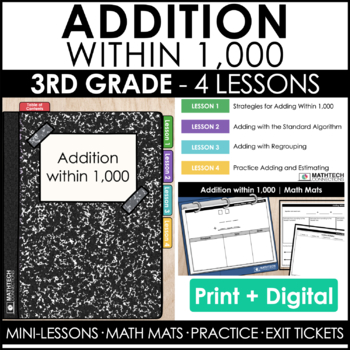
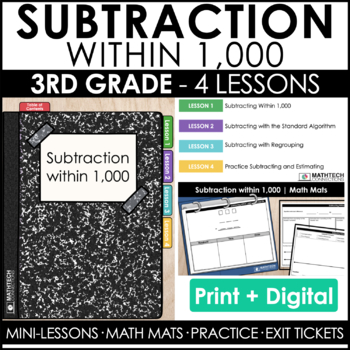
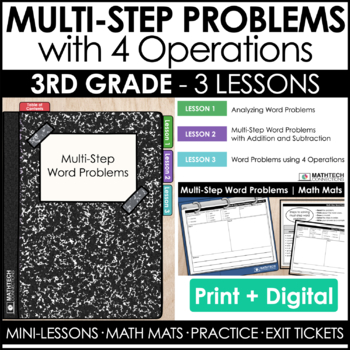
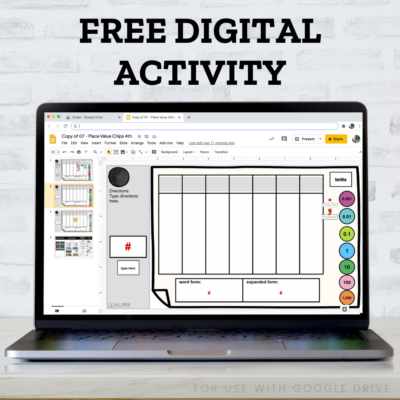

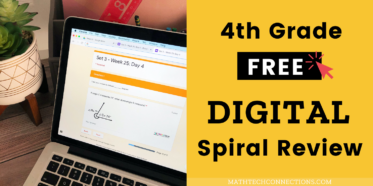
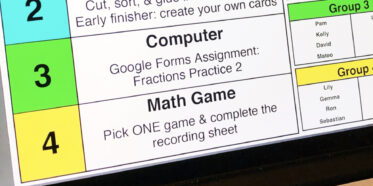
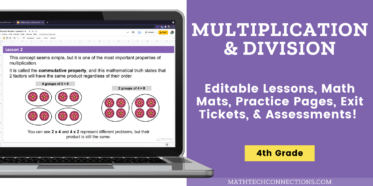

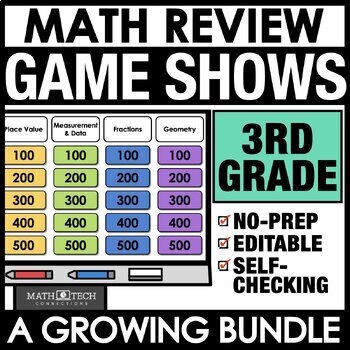
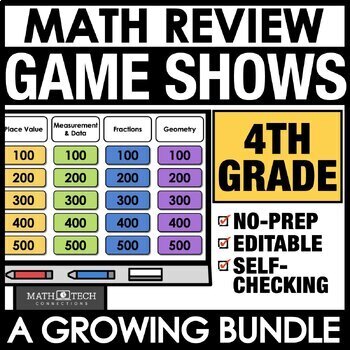
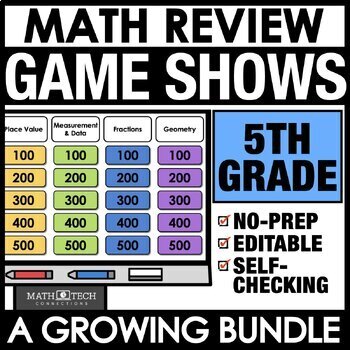

Leave a Comment